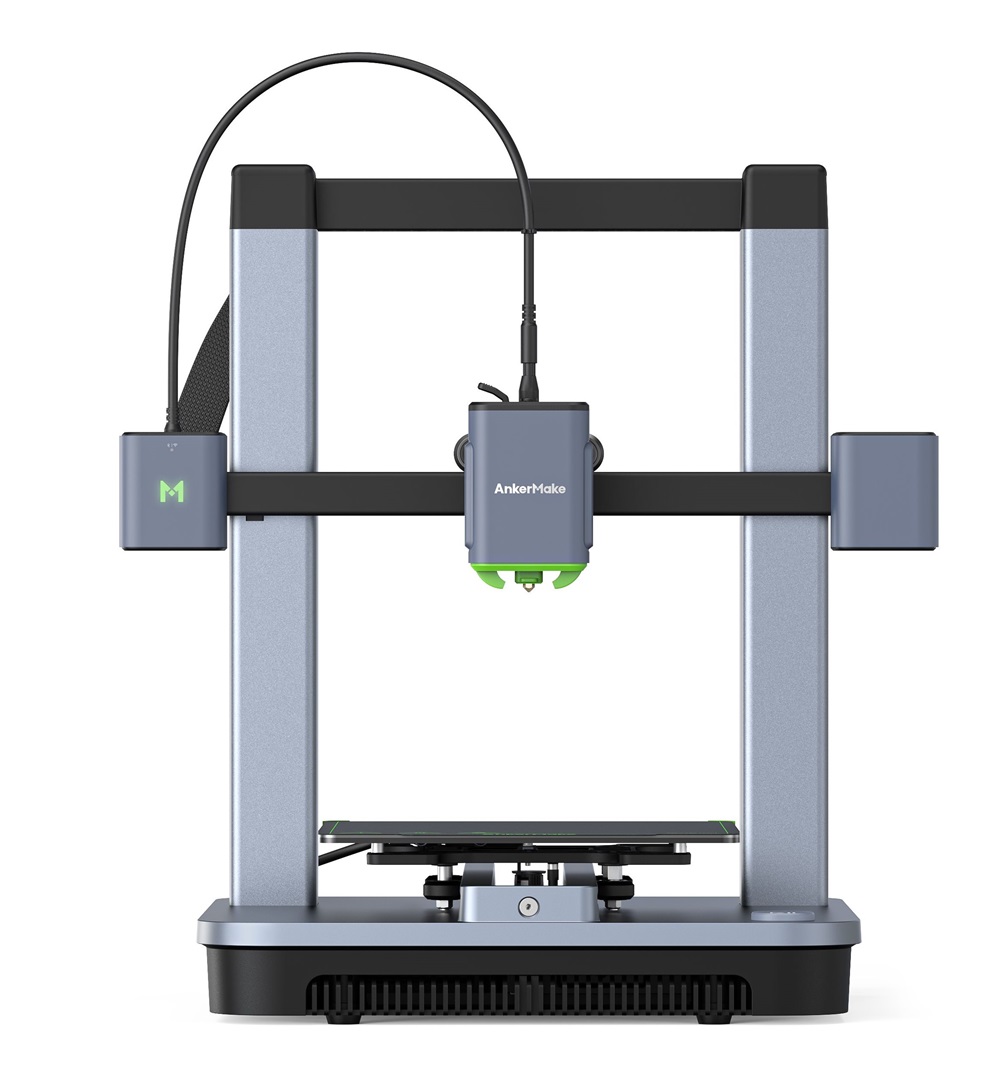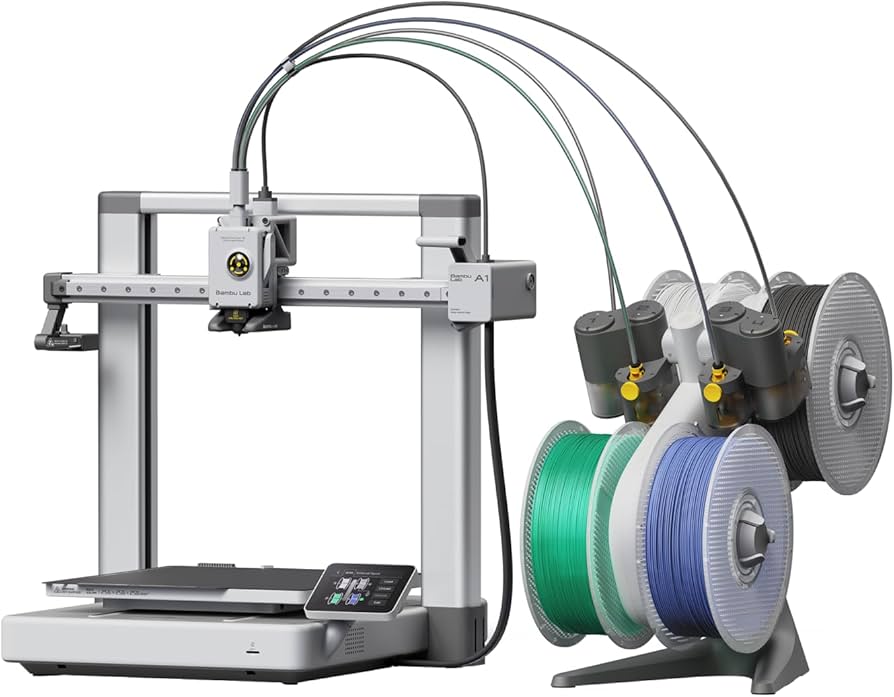Compare M5C vs A1
Comparison between the best 3D printers
Choose the best 3D printer at the best price. The cheapest 3D printers are here.
Buy a 3D printer here with 3D Fila.
 |
 |
|
| Model | M5C[BUY M5C] |
A1[BUY A1] |
| Printing Material | Filament | Filament |
| Buy Filament for AnkerMake M5C | Buy Filament forBambu Lab A1 | |
| Estimated price | $399,00 | $700,00 |
| Manufacturer | AnkerMake | Bambu Lab |
| Release Year | 2023 | 2023 |
| Print Volume [mm] | 220x220x250 | 256x256x256 |
| Printer Size [mm] | 466x374x480 | 385x410x430 |
| Weight [kg] | 9,6 | 8,3 |
| Power Loss Recovery | YES | YES |
| Enclosed printer | NO | NO |
| Bed Leveling | Automatic | Automatic |
| Filament End Sensor | YES | YES |
| Bed type | Heated | Heated |
| Power supply system | Direct Drive | Direct Drive |
| Standard nozzle | 0,4 | 0,4 |
| Maximum Nozzle Temperature [°C] | 300 | 300 |
| Maximum Bed Temperature [°C] | 100 | 100 |
| Maximum printing speed [mm/s] | 500 | 500 |
| Filament holder | YES | YES |
| Camera for supervision | NO | NO |
| Recommended filaments | PLA, PETG, TPU, ABS, PA, PLA-CF, PETG-CF, PA-CF | PLA, PETG, TPU, PVA |
| Recommended slicers | AnkerMake Studio (macOS, Windows), Simplify3D, Ultimaker Cura, PrusaSlicer | SuperSlicer, PrusaSlicer, Cura, OrcaSlicer |
| Maximum Resolution [mm] | 0,1 | 0,1 |
| Processor | ||
| Display | Touchscreen 3,5 | |
| Power Supply | 350 W | 350 W |
| Connectivity | Wi-Fi, USB-C, Bluetooth | Wi-Fi, Bambu-Bus, Cartão Micro SD |
| Operating systems | Windows, Linux e Macbook | Windows, Linux, Macbook |
| Date of registration in the system | 2024-09-11 | 2024-07-17 |
| Release date | 2023 | 2023 |
| Extra features | The AnkerMake M5 printer stands out for its impressive print speed, reaching up to 500mm/s. It features AI print monitoring, an integrated camera for creating timelapses, auto-leveling bed with pressure sensor, direct extruder, flexible PEI-coated build plate, and Wi-Fi and USB-C connectivity. Assembly is quick and easy, and the printer is designed to deliver high print quality and ease of use. | The BambuLab A1 printer features fully automatic calibration, multi-color printing with the AMS system, active flow rate compensation, quick nozzle change with a clip, active motor noise cancellation, a build volume of 256x256x256 mm³, a maximum extruder temperature of 300°C, and a heated bed of up to 100°C. In addition, it has high precision, a machine health management system and an intuitive 3.5-inch touchscreen interface. |
| Support for multiple colors and materials (AMS and CFS) | NO | YES |
Notes * |
||
| Cost-benefit | 7 / 10 | 7 / 10 |
| Hardware | 2.8 / 10 | 4.2 / 10 |
| Tela | . | . |
| Print volume | 3 / 10 | 4 / 10 |
| Performance | 4 / 10 | 4 / 10 |
| [BUY M5C] | [BUY A1] |
Conclusion |
| In comparing the AnkerMake M5C and the Bambu Lab A1 3D printers, several key factors stand out that influence their overall value and suitability for different users. The AnkerMake M5C, while more affordable, offers commendable features such as high print speeds of up to 500 mm/s, automatic bed leveling, and a variety of compatible filaments, making it a solid choice for users seeking efficiency and ease of use. Its intuitive touchscreen and quick assembly are significant advantages for beginners or those who value convenience. However, it lacks advanced capabilities like multi-color printing, which may limit creativity. On the other hand, the Bambu Lab A1 commands a higher price but justifies this with its enhanced features, including multi-color printing support and an active flow rate compensation system that ensures precision. The A1 also has a larger print volume and superior hardware ratings, making it more suitable for users who require versatility and advanced printing capabilities. Its intuitive calibration and machine health management system can greatly benefit serious hobbyists or professionals looking for reliability. In conclusion, the choice between these two printers primarily depends on the user's priorities. The AnkerMake M5C is an excellent cost-effective option for those prioritizing speed and ease of use, while the Bambu Lab A1 is ideal for advanced users seeking higher precision, multi-color capabilities, and an overall more versatile 3D printing experience. |

